Mastering the Chat Menu: Conversation Window Guide
Mastering the Chat Menu: Conversation Window Guide
Welcome to this comprehensive tutorial on using the Chat Menu’s Conversation Window in EasySocial. This guide walks you through how to effectively interact with leads, send and receive messages, manage templates, leverage AI Assist, and organize your conversations for maximum efficiency.
Getting Started: Accessing the Conversation Window
Step 1: Open the Chat Menu
Navigate to the Chat Menu and click on any lead to automatically open the chat inbox in the center of your screen. Here, you will see the complete conversation history with that lead.
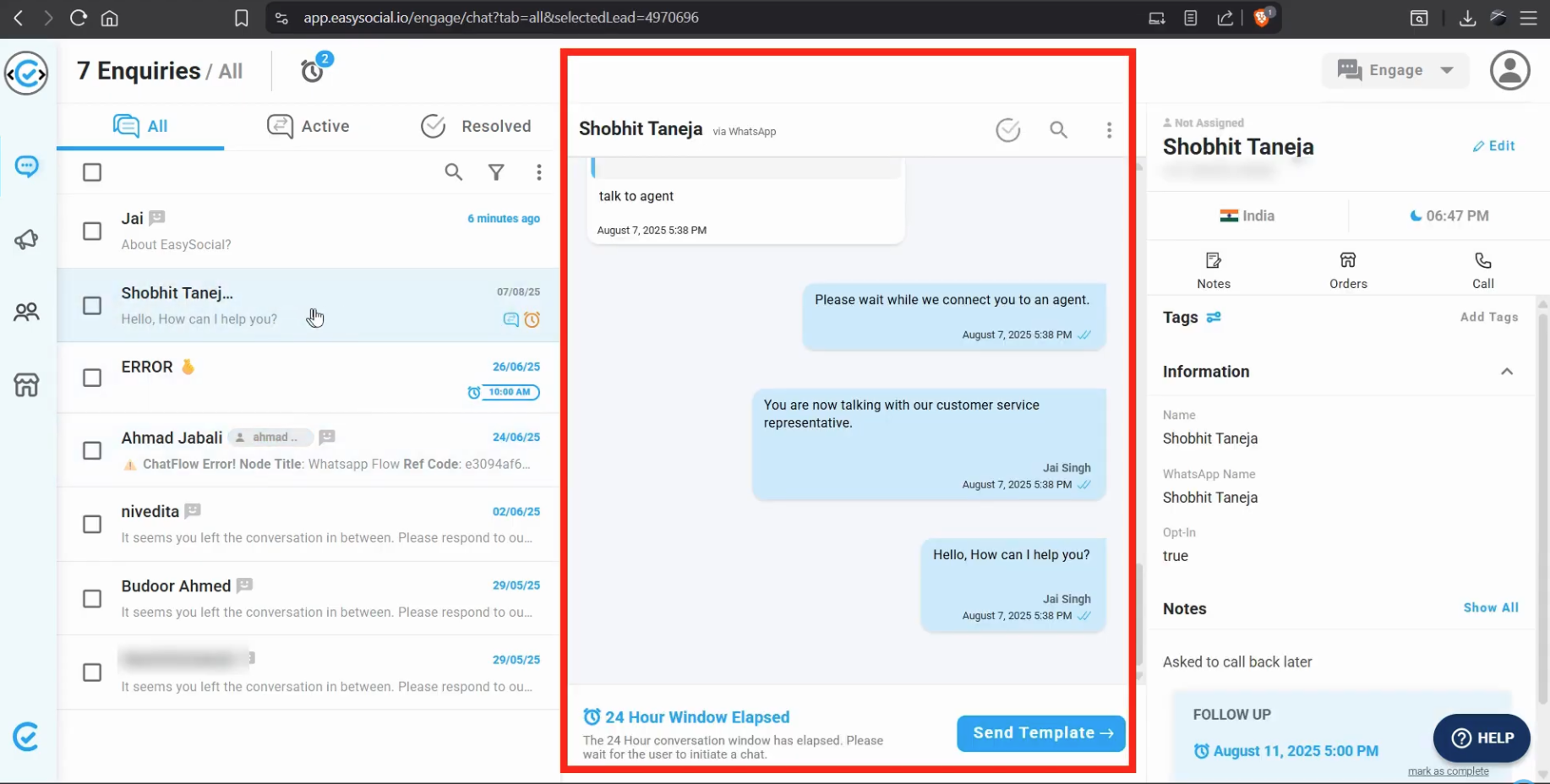
Step 2: Identify Lead Details
At the top of the chat inbox:
- Lead Name: Displayed prominently.
- Lead Origin: Shows whether the conversation started via WhatsApp, Instagram, or another integrated source.
Step 3: 24-Hour Messaging Window
If the lead hasn't messaged you in the last 24 hours, you'll see "24 hours window elapsed" at the bottom of the inbox. To initiate a new chat, either wait for the lead to message first or send a template message.
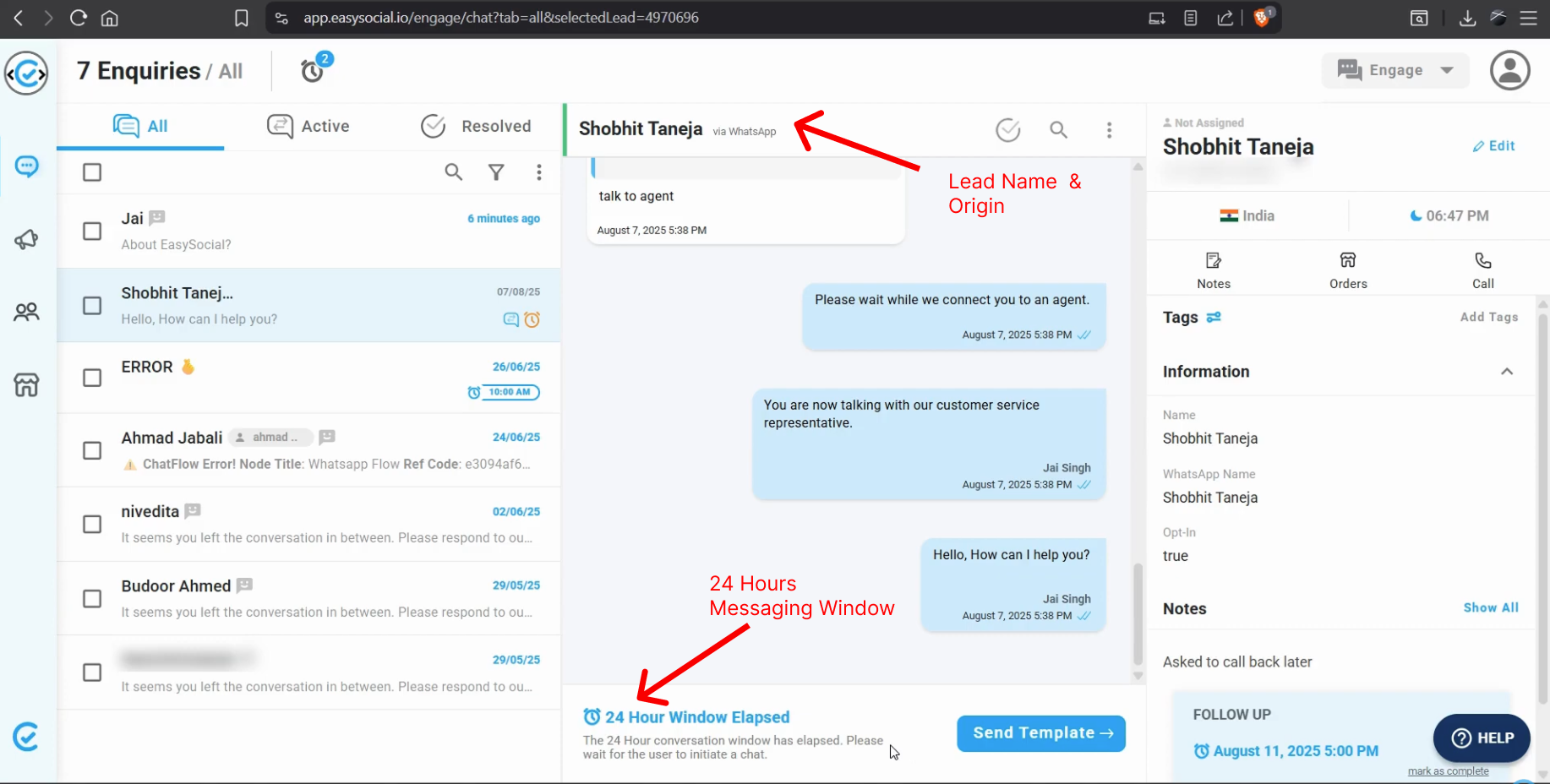
Sending Messages with Templates
Step 4: Send Template Message
Click the Send Template button.
Step 5: Select a Template
Choose from the list of pre-approved Meta templates.
Step 6: Auto Resend Toggle
Enable the automatic resend toggle to ensure delivery in case the message fails. Recommended for marketing messages.
Step 7: Sending Options
- Send Instantly: Deliver immediately.
- Schedule Send: Click the up arrow next to the send button → pick exact date and time.
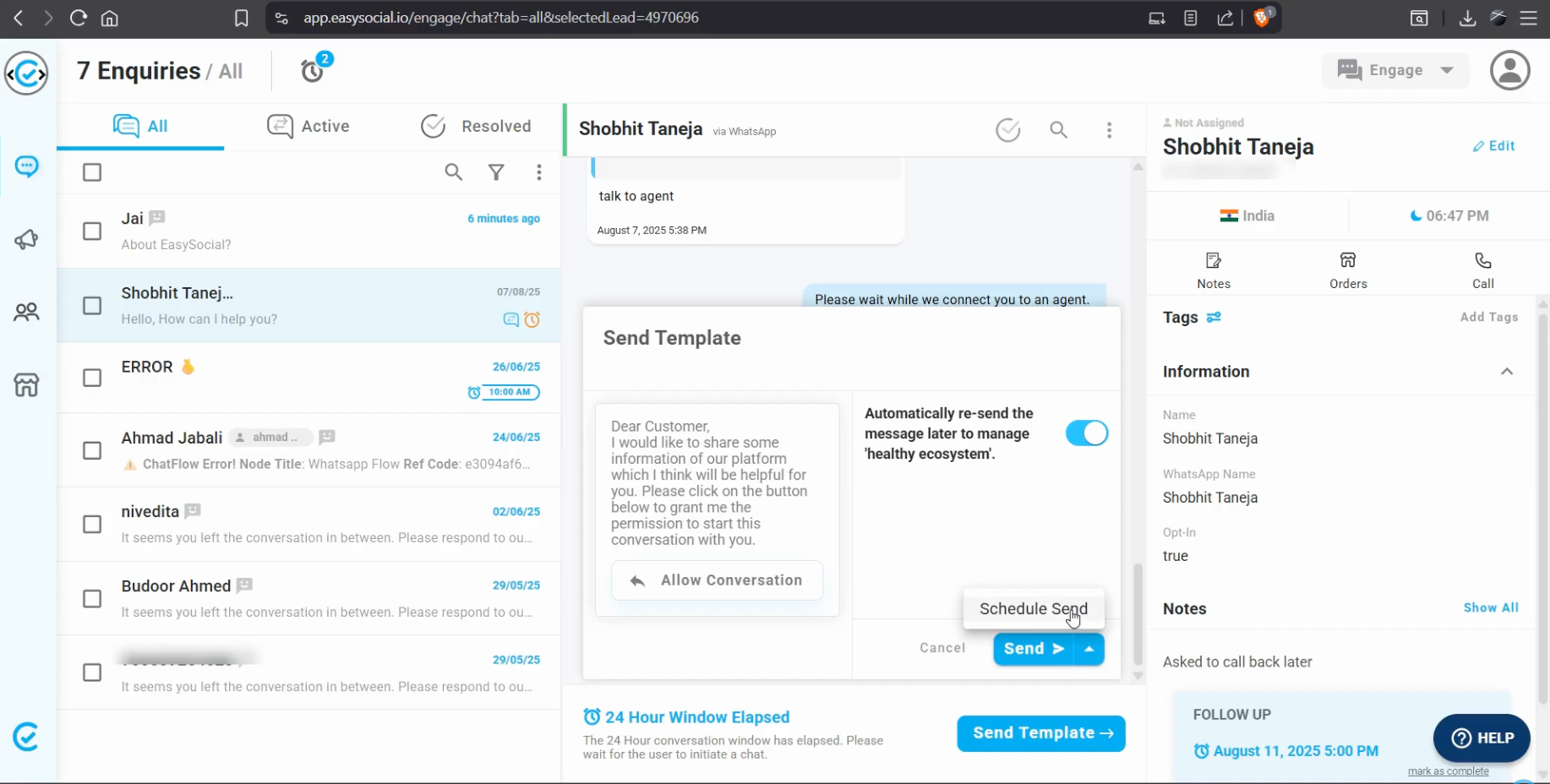
Taking Control of the Chat
Step 8: Take Control Option
Once the lead replies or initiates a conversation, click Take Control to manually type a response. Note: Chatbot will stop working once you take control.
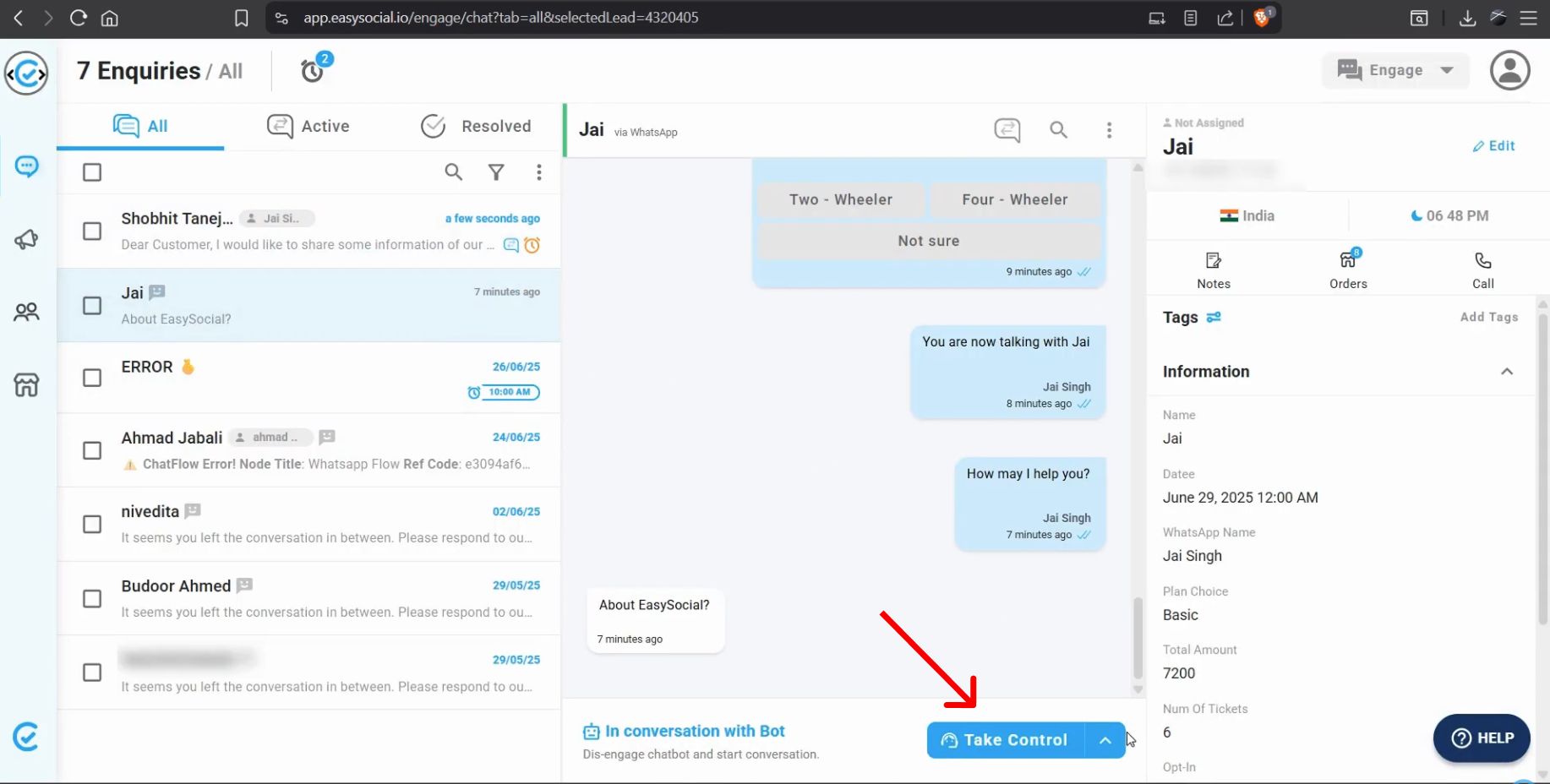
Step 9: Pre-Typed Human Message
A pre-typed message notifies the lead they are now conversing with a human agent. This message is editable in real-time or can be disabled in chatbot settings.
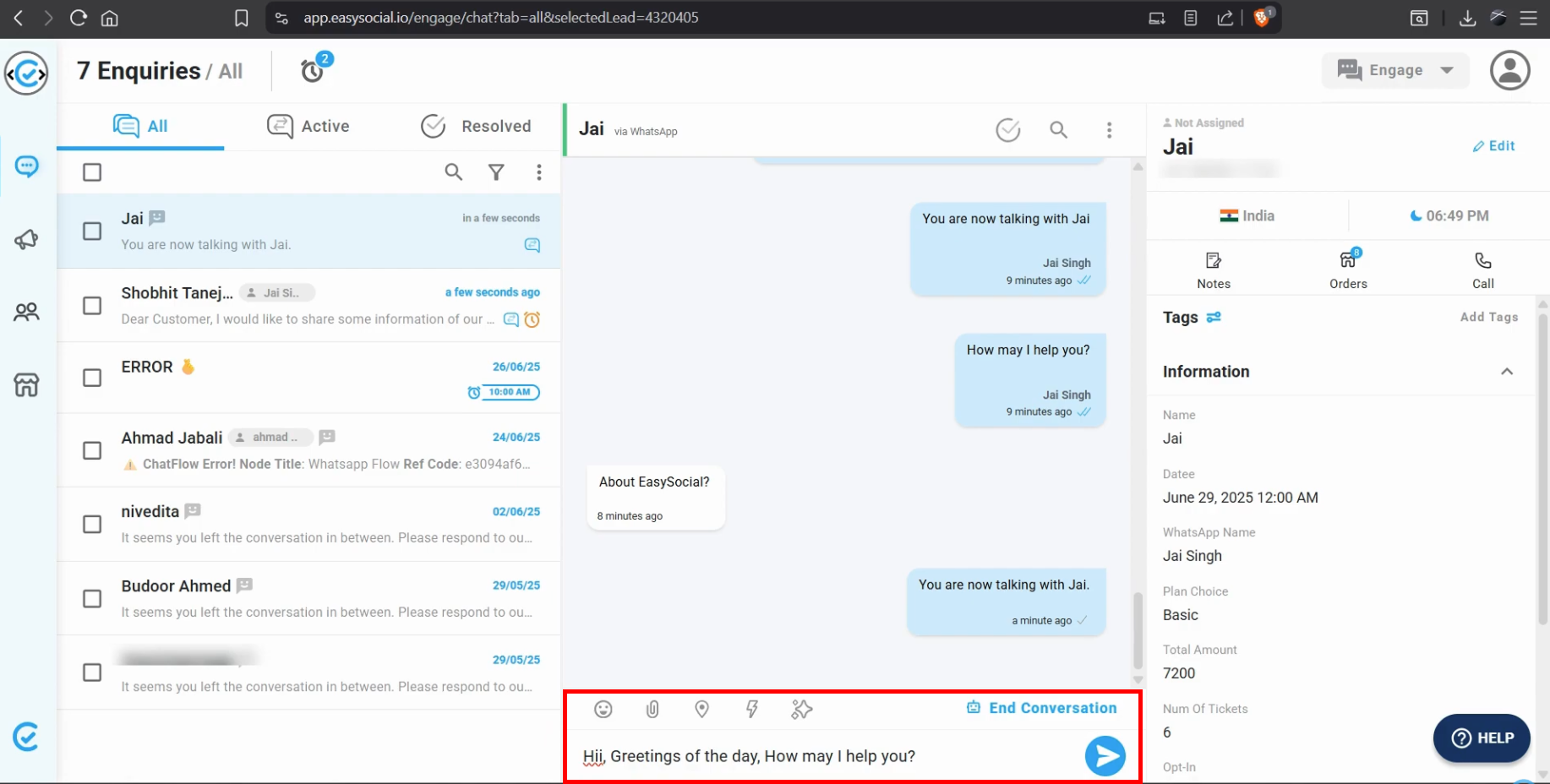
Step 10: Send Additional Templates
Click the up arrow next to Take Control to send additional template messages while handling the conversation.
Enhancing Messages
Step 11: Adding Emojis
Click the emoji icon to add expression to your messages.
Step 12: Attachments
Click the attachment icon to send photos, videos, documents, audio files, and products (if catalog connected).
Step 13: Share Location
Click the location icon to share a specific place from your catalog.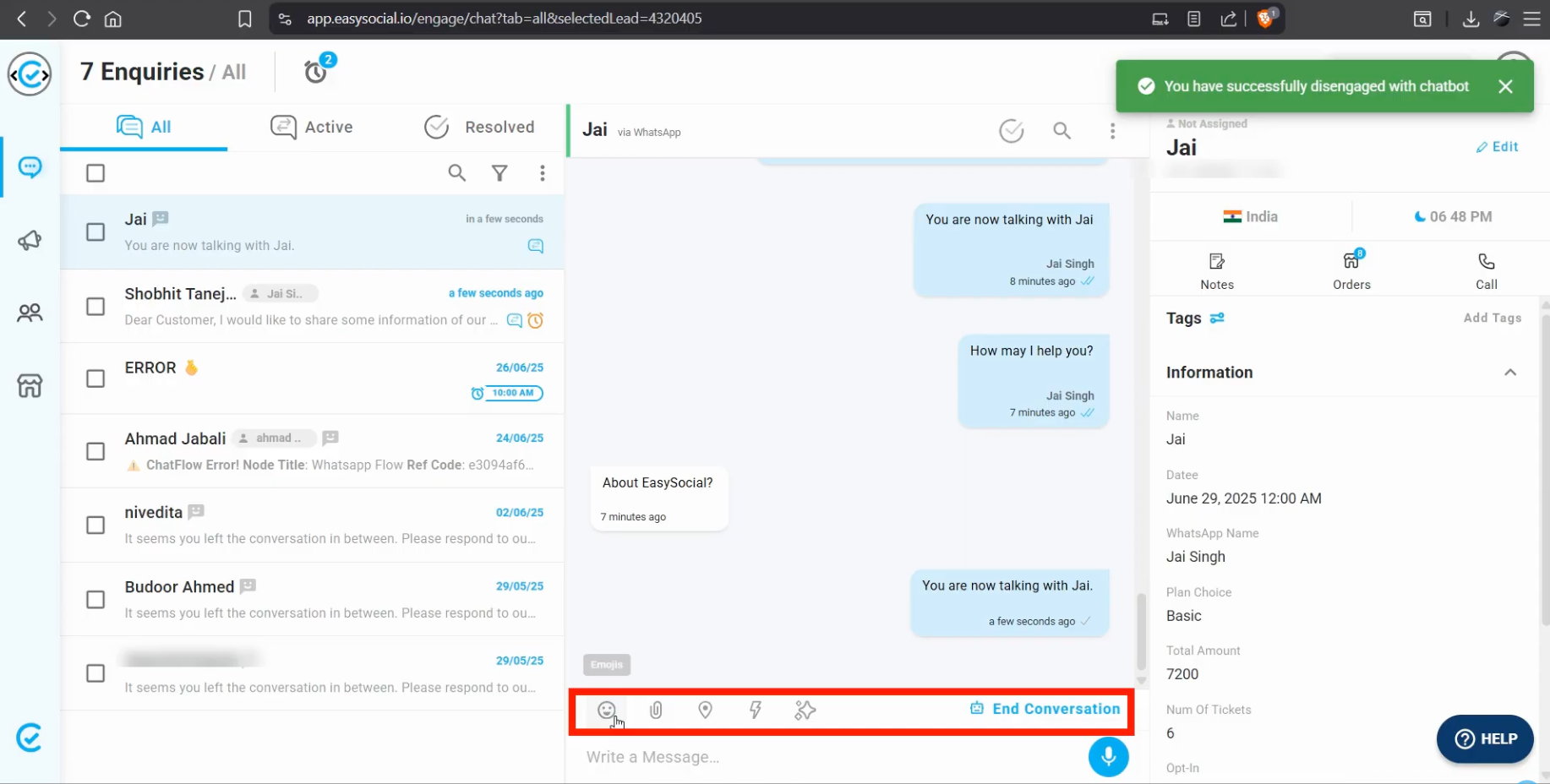
Quick Replies
Step 14: Create a Quick Reply
Click the three-dot menu → Add New → name your shortcut → type the message → click Save.
Step 15: Use a Quick Reply
- Select the reply checkbox → click Use Reply.
- Or type /shortcutname in the reply box.
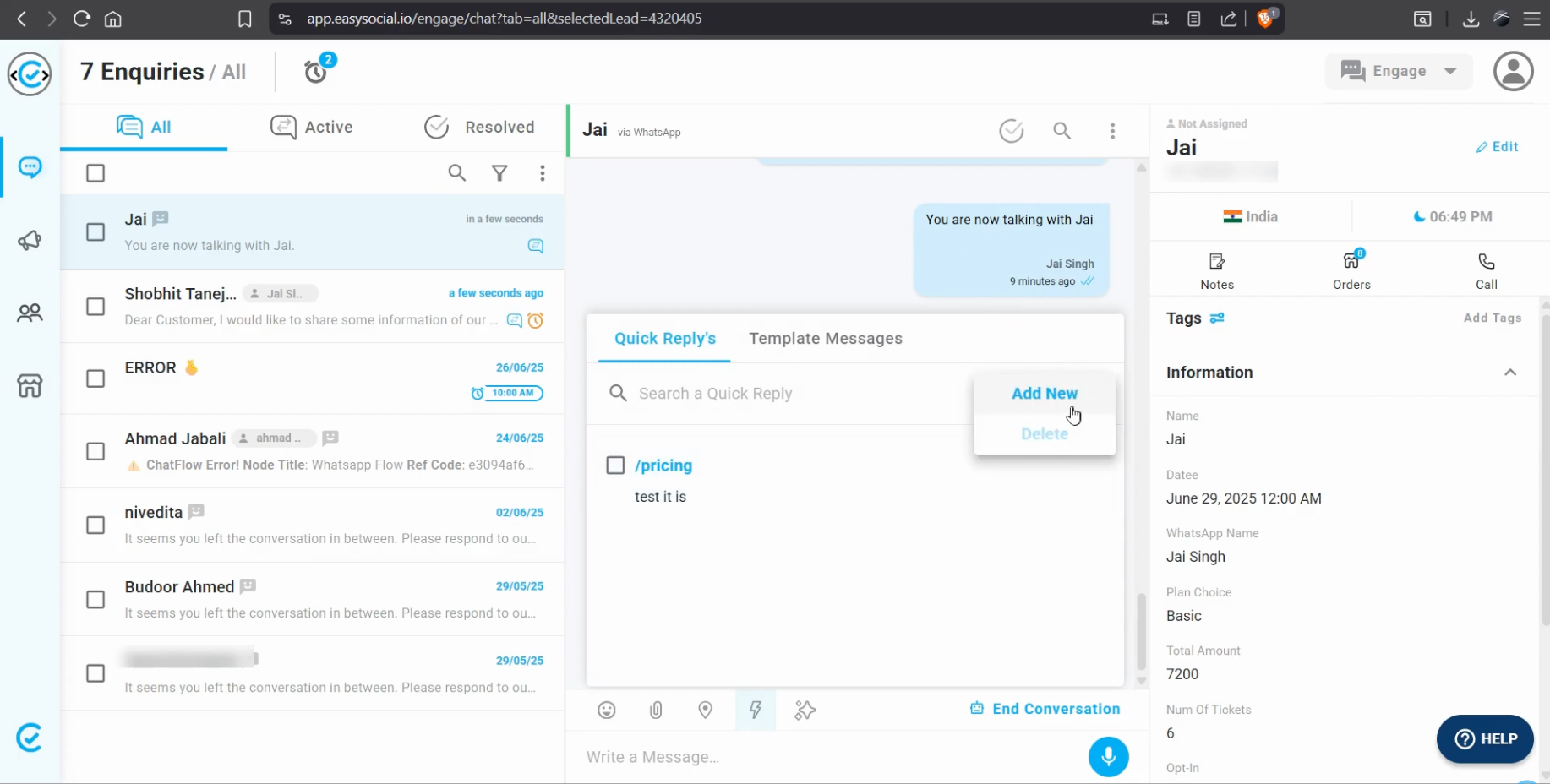
Step 16: Delete a Quick Reply
Select the checkbox next to the shortcut → three-dot menu → Delete.
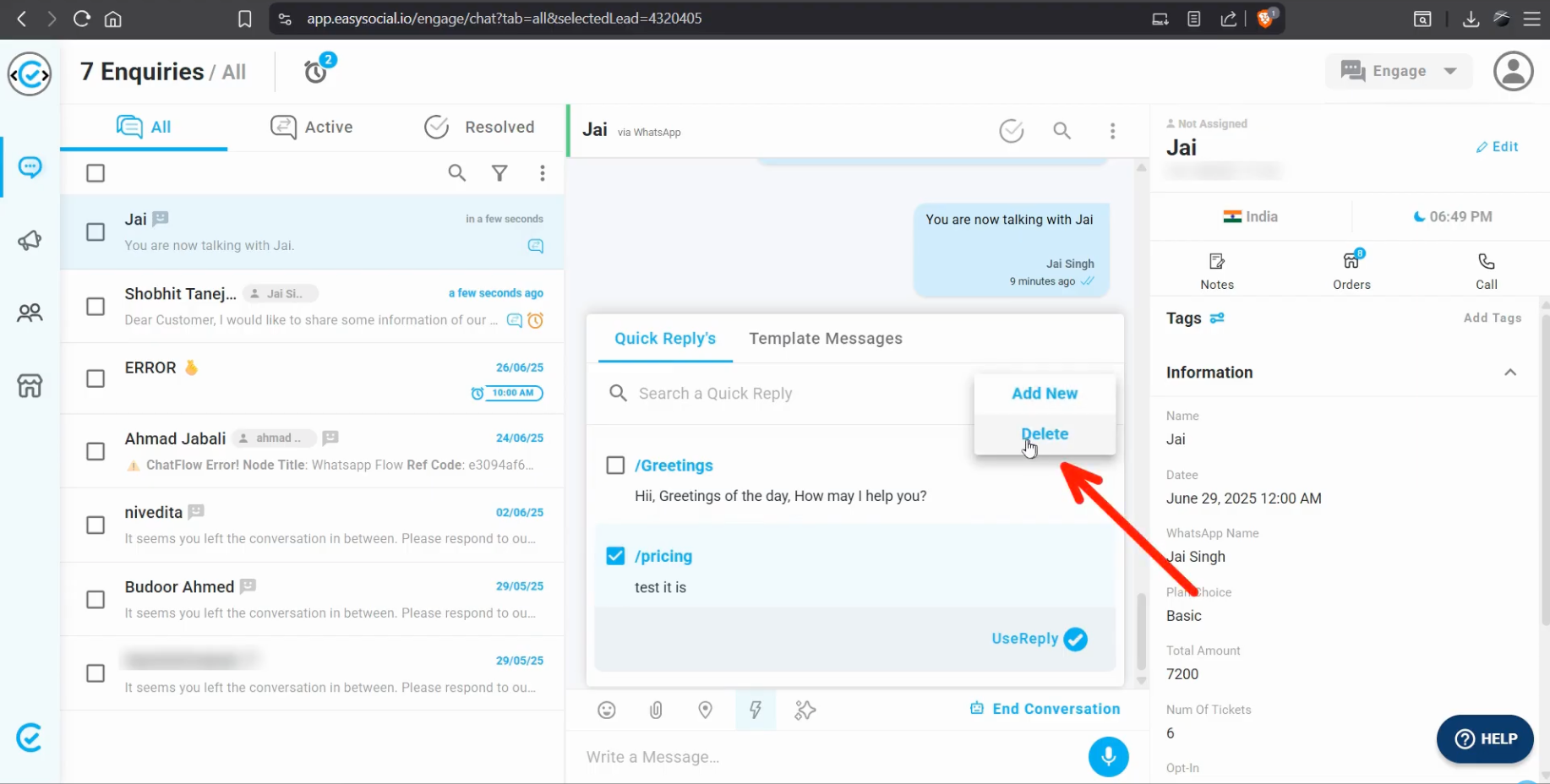
AI Assist
Step 17: Generate Answers with AI Assist
Click AI Assist to generate a response using ChatGPT. Responses can be edited before sending. You can also train the AI for your business.
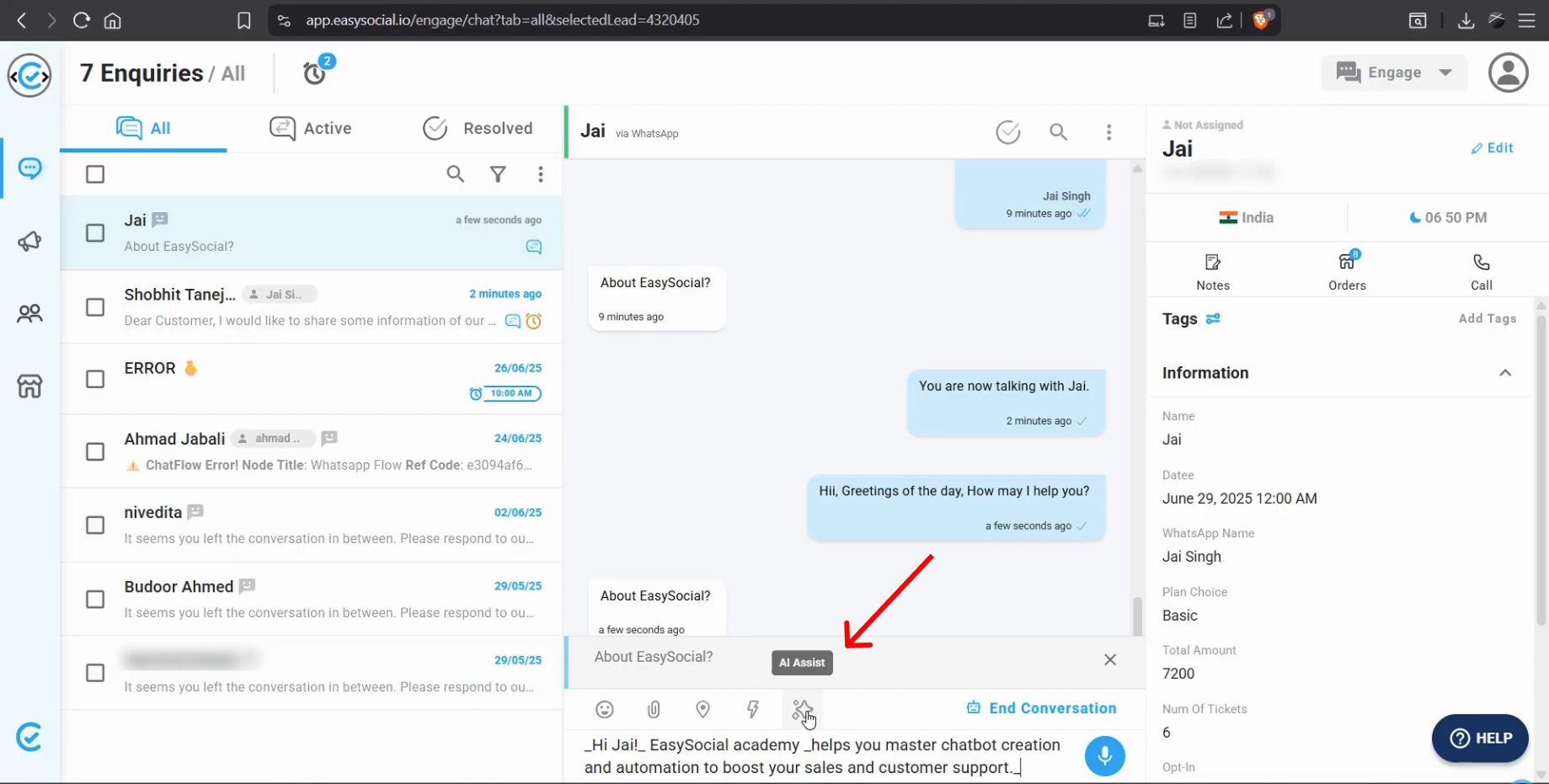
Ending Conversations & Chat Status
Step 18: End Conversation / Switch to Chatbot
Click End Conversation to return to chatbot mode if enabled.
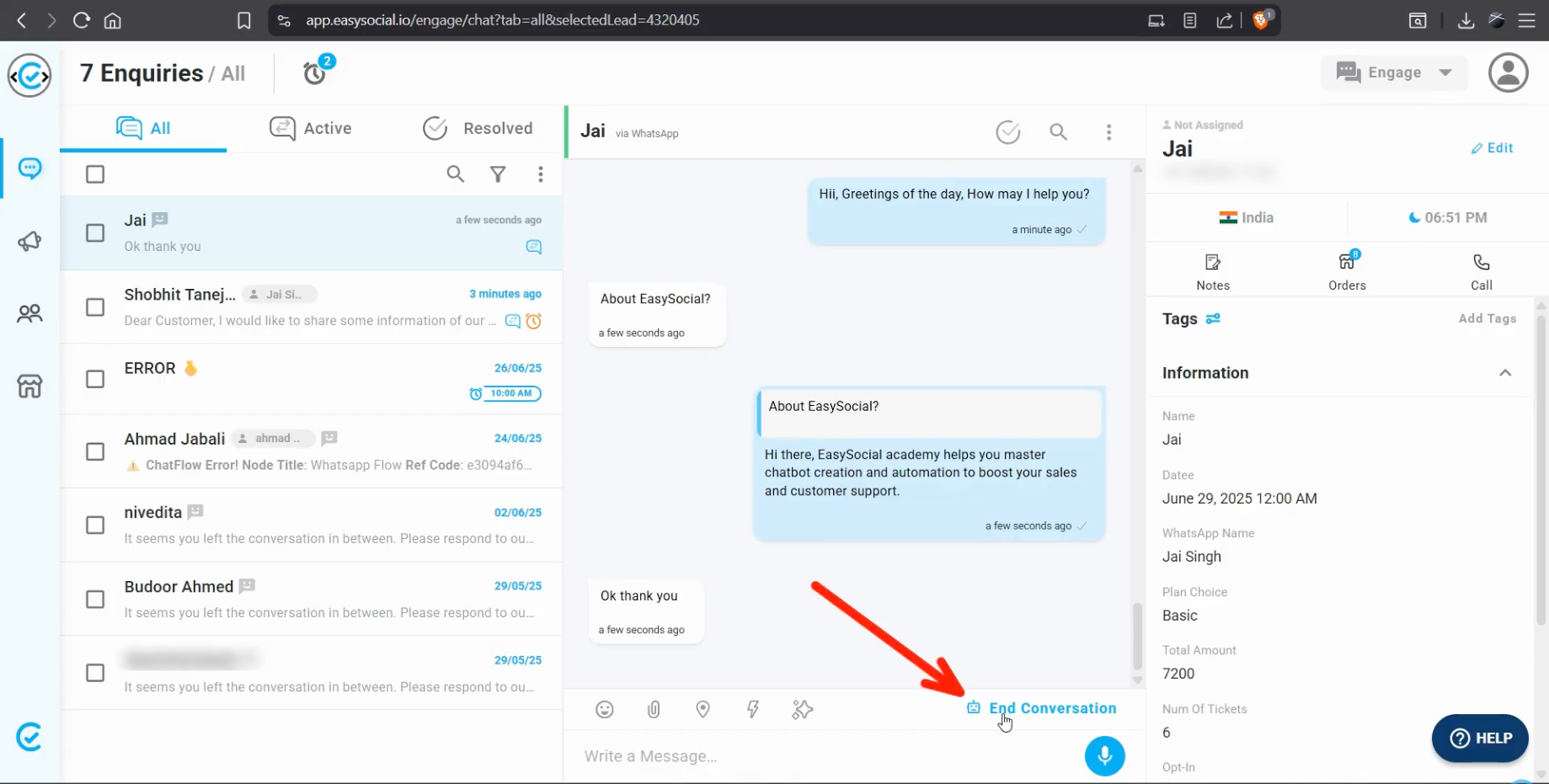
Step 19: Lead Status Indicators
- Active leads remain in the Active tab.
- Resolved leads move to the Resolved tab automatically.
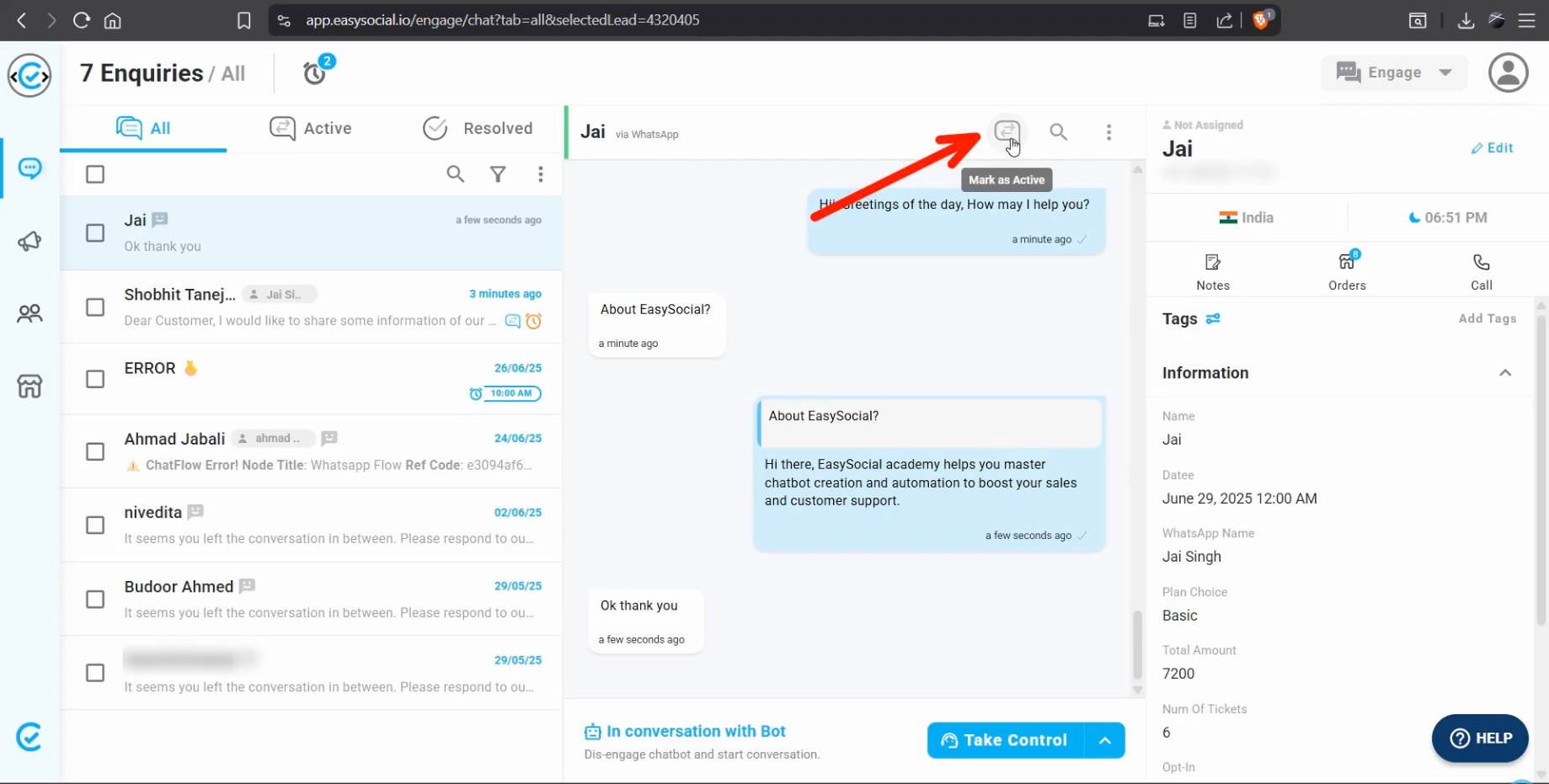
Searching & Assigning Leads
Step 20: Search Messages
Click the search icon at the top of the chat to search within the conversation.
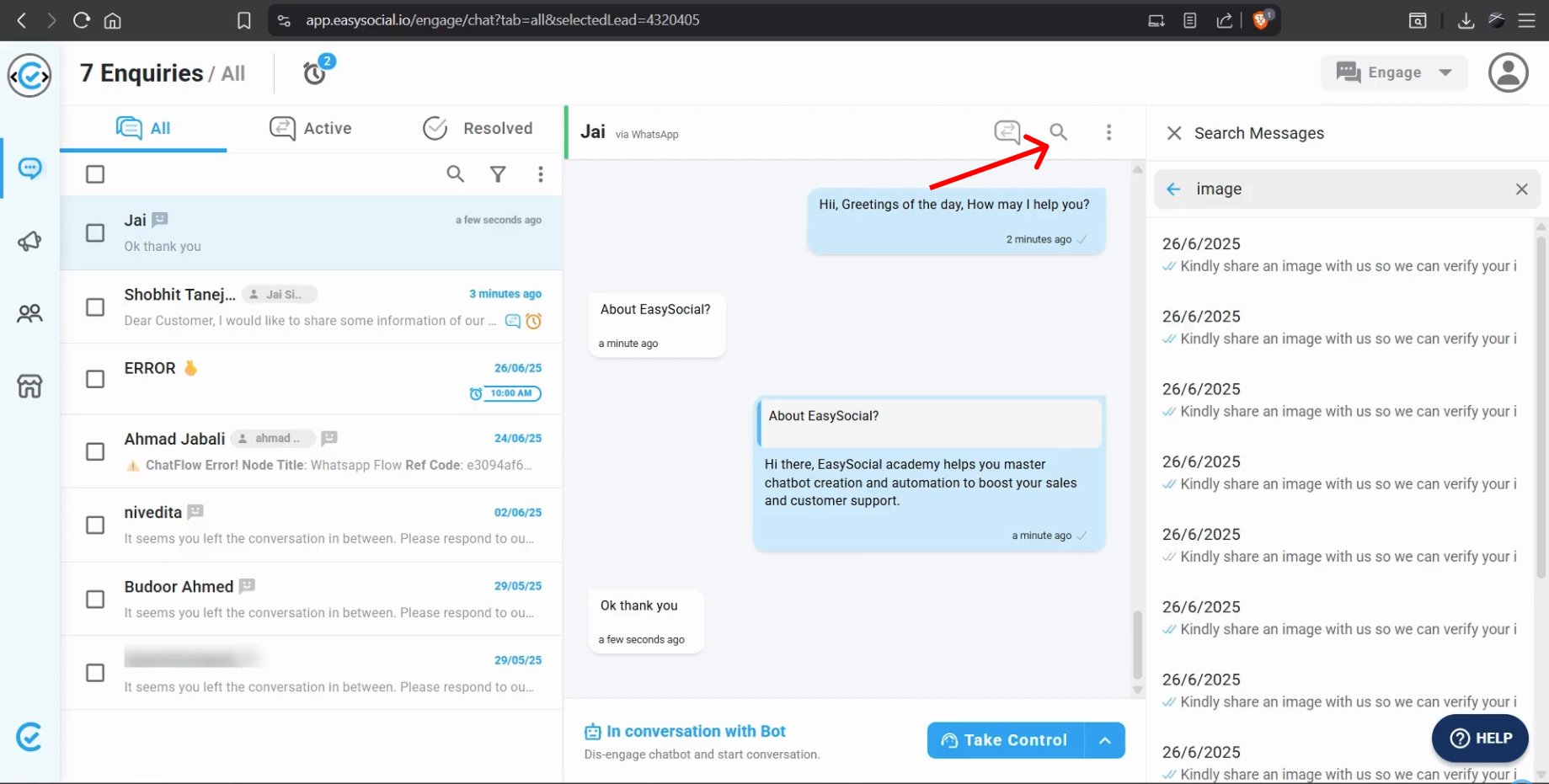
Step 21: Assign Leads
Click three-dot menu → Assign Lead → select a team member from the dropdown.
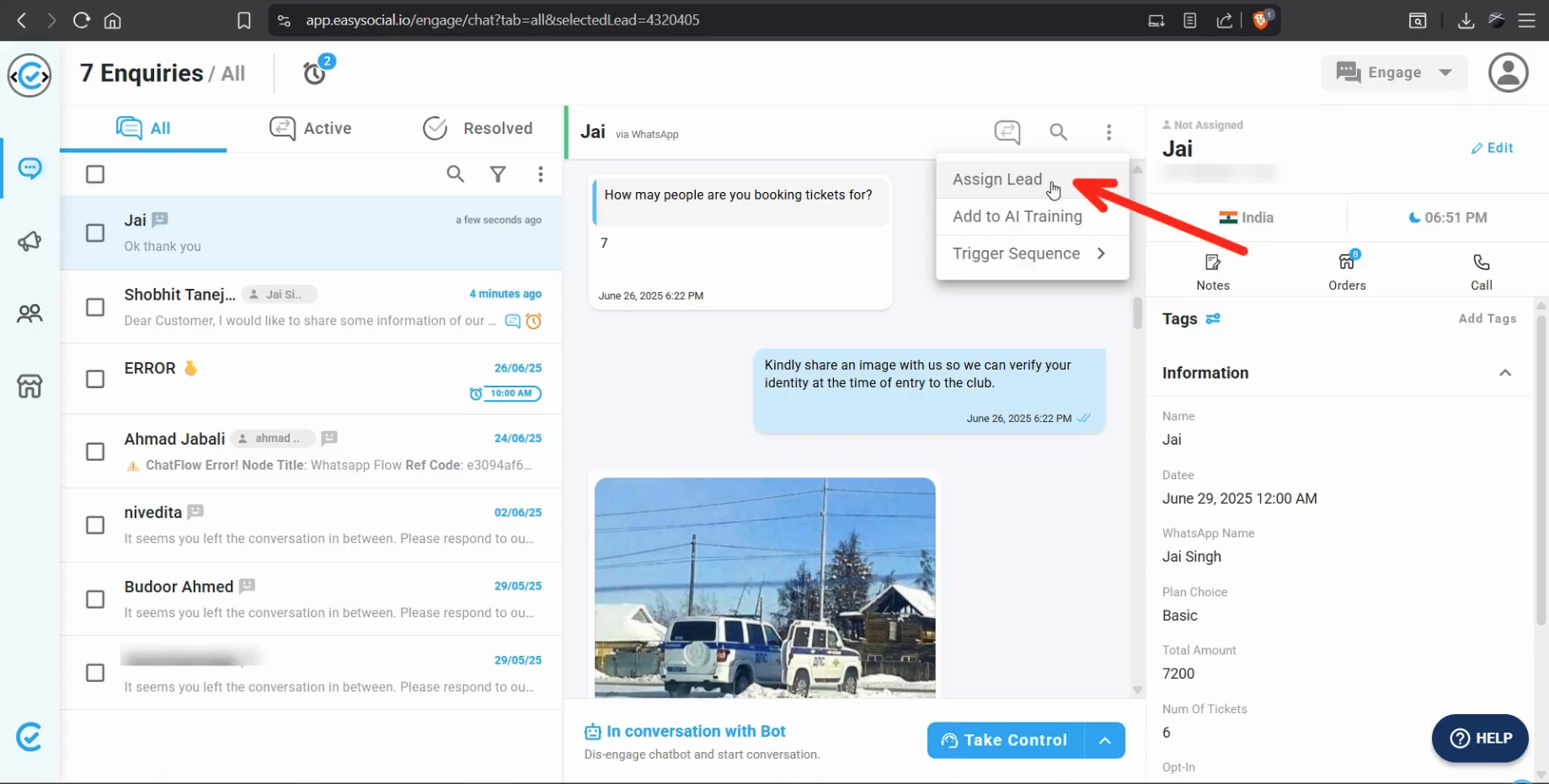
Automation Sequences
Step 22: Create Automation Sequences
Send sequential template messages automatically with specified gaps. Ideal for marketing, reminders, and follow-ups. Learn more in the dedicated Automation Sequence tutorial video.
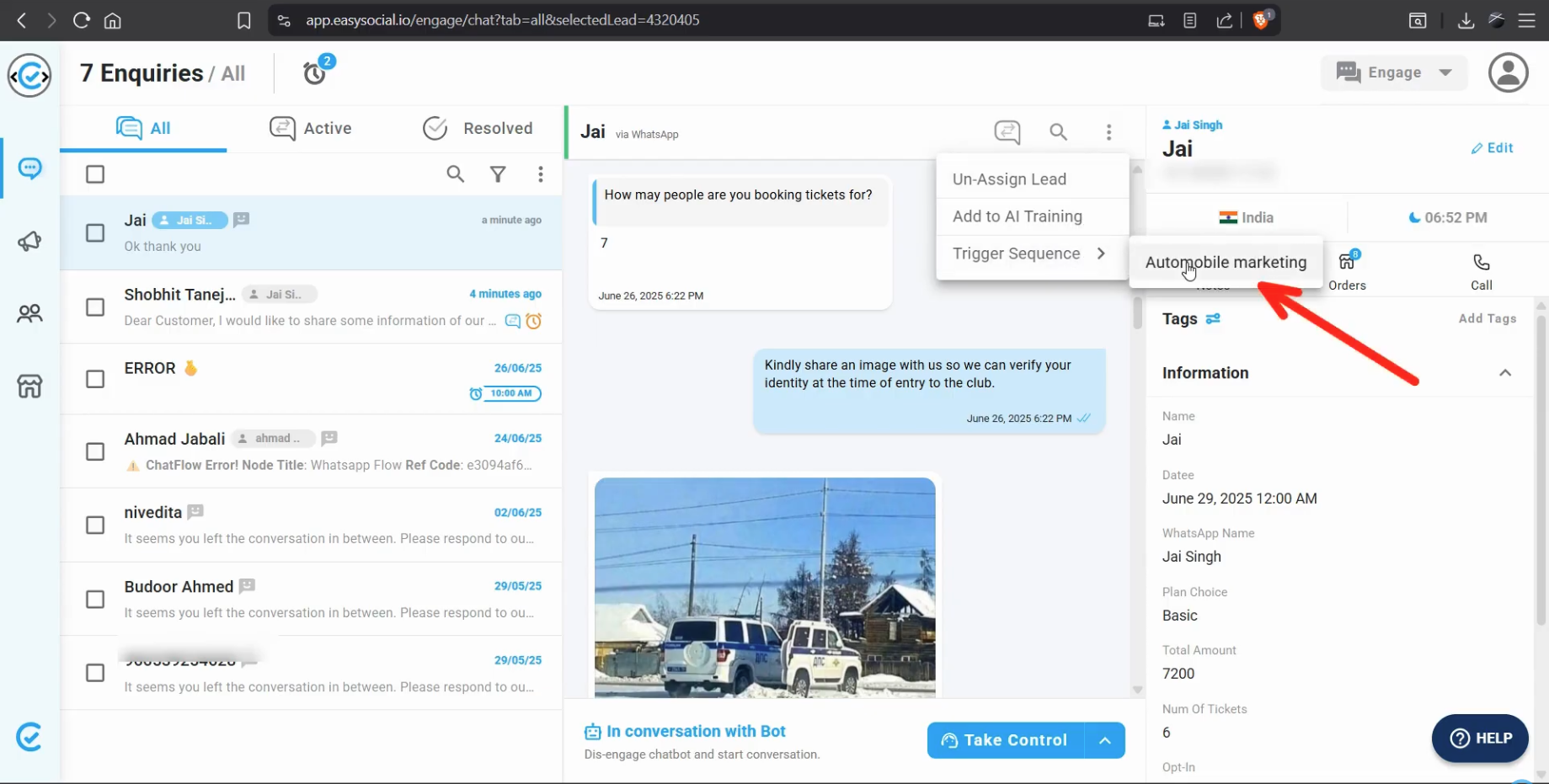
Conclusion
You’ve now mastered the Conversation Window in the Chat Menu. This guide covered initiating chats, sending templates, taking control, using quick replies, AI Assist, assigning leads, and automation sequences. Applying these features will help you manage conversations efficiently, enhance engagement, and streamline your team’s workflow.